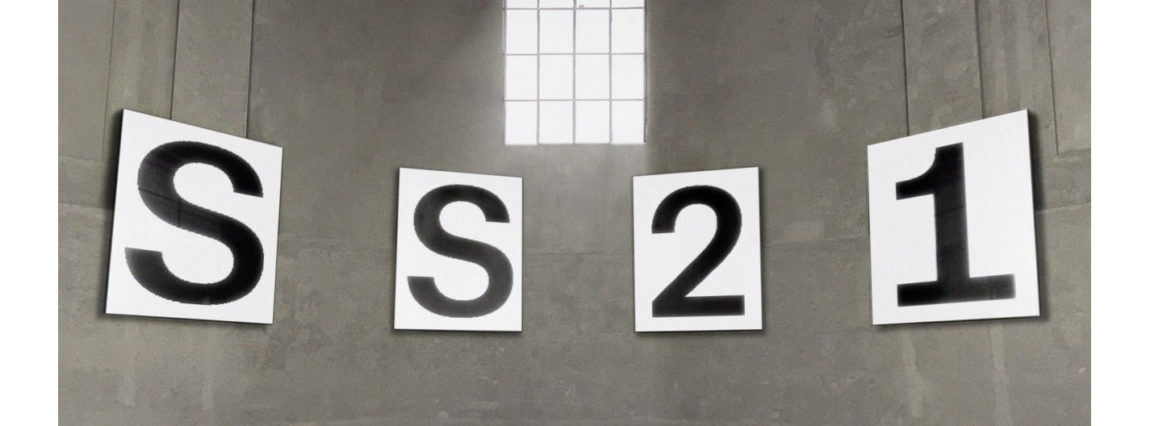For Prada Multiple Views SS21, a singular statement is replaced by the perspectives of many: multiple views, by a multitude of global creatives. The collection suggests the approach: different views, for a collection that proposes a myriad interpretations of the Prada man and woman. Congruent yet individually delineated, the collection is proposed in five chapters, which in turn are interpreted by five image-makers and artists. A true conversation.
Terence Nance, Joanna Piotrowska, Martine Syms, Juergen Teller and Willy Vanderperre each propose a film capturing a facet of the Prada collection, distinct and definite in its creative statement and ideology, a point of view on Prada. These inherently and fundamentally echo the traditional fashion show, where each observer has their own physical and ideological vantage-point on the collection, their own opinions, their own observations. It also reflects the reality of this Prada digital presentation: seemingly divergent but again seen by many, this time in their own environments, their own time, their own worlds. This is an embracing and celebration of that multiplicity – when people cannot commune, we can establish a different type of community, united through ideas, goals, beliefs.
Attention is drawn back to clothes – simple clothes, with a use and a value, a longevity and a place within people’s lives. As times become increasingly complex, clothes become straightforward, unostentatious, machines for living and tools for action and activity.
The July 2020 collection focuses on the quintessence of Prada, the meaning. How clothes are worn, where, and why. Often, their meanings are compound and multiplex: simultaneously speaking of sportswear and formality, of classicism and futurism, pieces are paradoxes, situated in multiple worlds – just as their debut here is not only framed by the eye of Prada, but by a panoply of creatives. The silhouette for men is sharp and narrow, fitted, with technologically innovative fabrications of Prada nylon and stretch materials juxtaposed with traditional suiting; for women, the same fabrics are given couture volumes and treatments. Then the reverse: industrial outfits in classic fabrications, leathers, cottons, taffeta, and true sportswear, drawn from Linea Rossa, technically innovative, function dictating form. In simplifying and paring back, a logical conclusion is lingerie: a foundational layer, a vulnerability, a fragility and humanity. Pieces evocative of these clothes in both male and female wardrobes – soft knit, fragile colour, light fabric – are worn as everyday clothing. A coat is clutched over bare skin.
A radicalism is found in purity – simplicity with a complexity, yet an antidote to useless complication in precision and directness. Contradiction is celebrated: in apparent fragility can be found strength, through rigour joy. A sense of lightness not only of physicality but of emotion – the dynamism of sportswear translates throughout, a sense of enjoyment, energy, fun. A reason for fashion.
Prada – and fashion – seen with multiple views.
CHAPTER I Willy Vanderperre (b. 1971, Belgium) ‘Prada evolves and changes every season; this season, the part we were shooting and filming felt like an honest collection. Stripped from fashion ideas, which turns that idea into fashion again. It also felt introspective and slightly schizophrenic. A look into the past with the future ahead. I hope that the audience feels that in the movie, a distilled pure and honest presentation of the collection.’
CHAPTER II Juergen Teller (b. 1964, Germany) ‘It was an honour to be asked to photograph and film Miuccia‘s last collection. I thought the men and women looked beautiful, elegant and modern. I enjoyed looking at Miuccia‘s vision and trying to make sense of it as honest and direct as possible.’
CHAPTER III Joanna Piotrowska (b. 1985, Poland) ‘Gesture and physicality are an essential non-verbal form of communication and play a big role in the conceptual and compositional aspects of my work. The finger snap, is a quick and subtle yet attention-demanding action. It is also used to indicate approval or to maintain rhythm. I thought that this short could be an interesting space to work with the snap as a recurring motif that marks the movements and refocuses the viewer’s attention to each new look.’
CHAPTER IV Martine Syms (b. 1988, USA) ‘The video is a collage of multiple formats and features iterative, repetitive movements intercut with beautiful people staring at images of themselves on monitors and screens in Milan and in my studio in Los Angeles. Since the collection pieces have a 60s feeling to them, I tried to include several references to cinema culture and surveillance/sousveillance from that time period to the present. I’m inspired by the way screens have come to make & unmake us, and what it means to be living, breathing, moving fleshy things in a world full of them.’
CHAPTER V Terence Nance (b. 1982, USA) ‘The film that came through was born of speed and play, I have no words through which to decode what the meaning is and was and will be but it may be about ‘time’ – and keeping your organs in that vessel we call a body while it contorts itself to love each second as it goes bye bye.’
check also:





Comments are off this post!